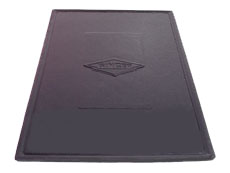Image of 1935 Singer Le Mans, Note: These illustrations use artistic license and may differ from actual historical models.
Performance Metrics
Fundamental Metrics
Emotional Appeal
MMP Rating
| Engine Specifications | |
|---|---|
| Engine: | 4-cylinder |
| Displacement: | 972 cc |
| Horsepower: | Estimated 36-38 HP |
| Torque: | Not available |
| Compression Ratio: | Not available |
| Ignition System: | Coil ignition |
| Cooling System: | Water-cooled |
| Performance Specifications | |
| 0-60 Time: | Not available |
| 1/4 Mile Time: | Not available |
| Top Speed: | 75 mph |
| Transmission and Drive | |
| Drive Type: | Rear-wheel drive |
| Transmission Type: | 4-speed manual |
| Fuel and Efficiency | |
| Fuel System Type: | Carburetor |
| MPG: | Not available |
| Dimensions and Brakes | |
| Brakes: | Drum brakes |
| Wheelbase: | 90 inches |
| Weight: | 1,500 lbs |
Note: Specifications for classic cars are given to the best of our ability, considering the limited and variant data available.
Introduction
The 1935 Singer Le Mans stands as a testament to the ingenuity and elegance of pre-war sports cars. Crafted by the Singer Motor Company, this vehicle emerged from an era when automotive design was as much about artistry as it was about engineering. The Singer Le Mans was not just a car; it was a statement of sophistication and performance during a time when the world was on the brink of monumental change. A notable moment in its history is its namesake, the infamous Le Mans 24-hour race, which inspired its creation and hinted at its spirited performance.
Design and Innovation
With its sweeping fenders and rakish lines, the 1935 Singer Le Mans captured the essence of speed and grace. The exterior styling was both functional and aesthetically pleasing, with a grille that suggested motion even at a standstill. Inside, the vehicle boasted a cockpit that prioritized driver engagement, featuring an array of gauges set in a metal dashboard and seats trimmed with quality leather. Technological features for its time included a four-speed manual gearbox and a robust overhead camshaft engine. While color options were limited by today's standards, popular choices included rich blues and deep reds. The most iconic body style was the two-seater sports tourer, which perfectly encapsulated the car's adventurous spirit.
Historical Significance
The Singer Le Mans made an indelible mark on automotive history with its blend of affordability and performance. It stood apart from contemporaries by offering genuine sports car thrills without the exclusive price tag of high-end luxury models. Its legacy is evident in how it democratized sports car ownership and influenced future designs that valued driver enjoyment over opulence.
Performance and Handling
Underneath its bonnet, the Singer Le Mans housed a 972cc engine capable of propelling it to top speeds nearing 70 mph—a remarkable feat for its time. Acceleration from 0-60 mph was achieved briskly for an engine of such modest displacement. On winding roads or when navigating bumps, the car's handling remained poised, offering drivers an intimate connection with the road. The symphony of the engine provided an auditory thrill matched only by the tactile feedback through the steering wheel and gearshift.
Ownership Experience
The Singer Le Mans served various roles from daily transportation to weekend racing warrior. Its mechanical simplicity meant that maintenance could often be handled by the owner, making it a beloved choice among hands-on enthusiasts. While reliability was typical for its era, owners cherished their vehicles for their character rather than their convenience.
Fun Facts
A few Singer Le Mans cars were known to have been owned by notable figures of their time, adding to their allure. Although not record-breaking in terms of speed by modern standards, they held their own in endurance events that showcased their durability. Criticisms often centered on their modest power output compared to larger-engined rivals.
Collector's Information
Today, a 1935 Singer Le Mans can fetch anywhere from mid-five figures up to six figures depending on condition, provenance, and originality. Production numbers were relatively low, with estimates suggesting that only a few thousand were produced. As with many pre-war classics, values have generally appreciated over time as these vehicles become rarer and more sought after by collectors.
Conclusion
The 1935 Singer Le Mans is more than just a classic car; it is a piece of automotive history that embodies the spirit of innovation and adventure from an era long past. Its combination of style, performance, and historical significance ensures that it remains a cherished classic among enthusiasts around the globe.
1935 Singer Le Mans Catalog of Parts
 1935 Singer LE MANS Accessory Floor Mat - 12"X17"-AC 48Accessory Floor Mat - made of high quality black rubber with molded original emblem. Also designed to be sewn into new carpets. 12"X17", Each
1935 Singer LE MANS Accessory Floor Mat - 12"X17"-AC 48Accessory Floor Mat - made of high quality black rubber with molded original emblem. Also designed to be sewn into new carpets. 12"X17", Each 1935 Singer LE MANS Clutch and Brake Pedal Pads. 1-3/4" wide X 3" long. Pair-CB 98Clutch and Brake Pedal Pads. 1-3/4" wide X 3" long. Pair
1935 Singer LE MANS Clutch and Brake Pedal Pads. 1-3/4" wide X 3" long. Pair-CB 98Clutch and Brake Pedal Pads. 1-3/4" wide X 3" long. PairWhy Choose Metro?
For over 100 years, Metro Moulded Parts has been the pinnacle of quality in classic car restoration parts. Our commitment to precision and authenticity in every component ensures a perfect fit and an OEM-level appearance.
- Expert Craftsmanship & Quality: Each part is a testament to our dedication to reliability and perfection, crafted from original designs and thoroughly tested.
- Advanced Technology: We use cutting-edge techniques to create flawless, long-lasting parts that surpass others in performance.
- SuperSoft Sponge – The Ultimate Door Seal: Not only are our door seals 30% softer than competitors', but they're also guaranteed to never leak. They effectively reduce wind and road noise, enhancing your classic car's comfort and driving experience.
- Proudly American: Our parts are a product of American craftsmanship, made in the USA with a spirit of excellence and heritage.
- Unrivaled Warranty: We back our products with a 30-year industry-leading warranty, a testament to our confidence in their quality.
Join us in preserving the legacy of classic cars with parts that are crafted for perfection, not just made.

